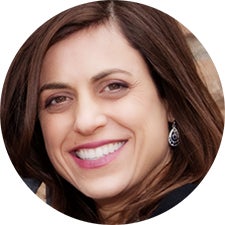By Joe Arney
A decade ago, as major floods tore through Boulder and the Front Range, residents found ways to stay updated through a variety of channels—emergency managers, broadcast media, neighbors, family, friends and social media.

That’s not atypical: When it comes to making survival decisions in a disaster, people have always cobbled together a mix of official bulletins and word-of-mouth updates in making what they believe are the best choices.
If that disaster happened today, though, the response might look different. “All-purpose” social media platforms are less trusted—thanks to misinformation, politics, disruptive ownership and hate speech—but command far larger audiences than broadcast and print.
It’s why Leysia Palen believes there’s a need for social media platforms that are part of the civic infrastructure. The traditional players will always have a role, but public counterparts could ensure people get the hazards-specific information and support they need in disaster.
Twitter, now X, has most noticeably undergone a “devolution,” said Palen, distinguished professor and founding chair of the information science department at the College of Media, Communication and Information, “but people are inventive and will make do without it.”
An ‘uncomfortable’ reversion
“We would still have families, neighborhoods and communities finding ways to discuss evacuations or share updates through digital media. But we’ll have to do extra work to get those formal communications from emergency managers”—such as warnings and shelter information—“that we are so used to receiving over Twitter, for example. And that reversion would be uncomfortable for us.”
Palen, an expert in crisis informatics—the study of data, information and technology as it’s generated, used and shared in natural disasters—talked about the changing ways people communicate and share information ahead of the 10th anniversary of the 2013 Boulder flood, when parts of the city received 20 inches of rain in a storm that killed eight and caused an estimated $1 billion in damages. Her research is informed by decades of thought leadership experience at CU Boulder and an extensive private-sector career that included stops at Microsoft, Xerox PARC and Boeing.
“My fear is that we become used to these early forms of social media and think that’s the way they have to be designed. But I think that’s really an open question going forward.”
Leysia Palen, distinguished professor, information science
“One of the challenges of studying the flood was, as a relatively sparsely populated area, we didn’t have as much social media data as you’d like to do something truly useful,” she said. “I lived through it—and it felt huge, of course—but we didn’t see the kind of national and international attention that happened in New York during Hurricane Sandy.”
Part of that was a change in how Twitter was being used, Palen said. Until about 2012, the platform was an interesting place to study collective behavior in a disaster, “because we saw the same kind of altruism in physical spaces that we did online. Everyone had the same goal of moving to safety, helping others, checking on the status of others. But then we started to see people using social media to take advantage of those who are vulnerable.”
A pioneer in crisis informatics who was among the first scholars to study digitally embedded information in natural hazard events, Palen has won numerous grants and published influential papers about data and disaster. That also has made her an expert on social media design, since platforms like Facebook and X have seized share of both formal messages from government agencies and informal communication among members of communities affected by disaster.
Notably, she specializes in responses to disasters arising from natural hazards, as opposed to all different kinds of crises. “We’re all on the same side fighting a hurricane, but maybe not when it comes to acts of crime or how we perceive political crises,” she said.
What might have been—and what may come
But the work of political actors with outsized audiences, bots and “people masquerading as bots” turned all-purpose platforms like X into something more sinister.
“It was never going to last as it did forever,” Palen said. “The early days of Twitter were an example of what it could be. It was great that it was easy to use—but it’s so spare in terms of features that it became easy to manipulate programmatically, too.”
When it comes to crisis response, Palen said, we need to be thinking about the medium. All-purpose platforms—Facebook, X and so on—won’t do the job alone. She used the example of the National Weather Service, which puts out far more detail about storms than the average user can understand. Third-party commercial providers, like The Weather Channel, interpret and package that information for consumers.
“We need purpose-built platforms, as well, with carefully considered feature sets—and constraints,” she said. “My fear is that we become used to these early forms of social media and think that’s the way they have to be designed. But I think that’s really an open question going forward. We have the opportunity to design for interaction differently than just what we have been exposed to.”
